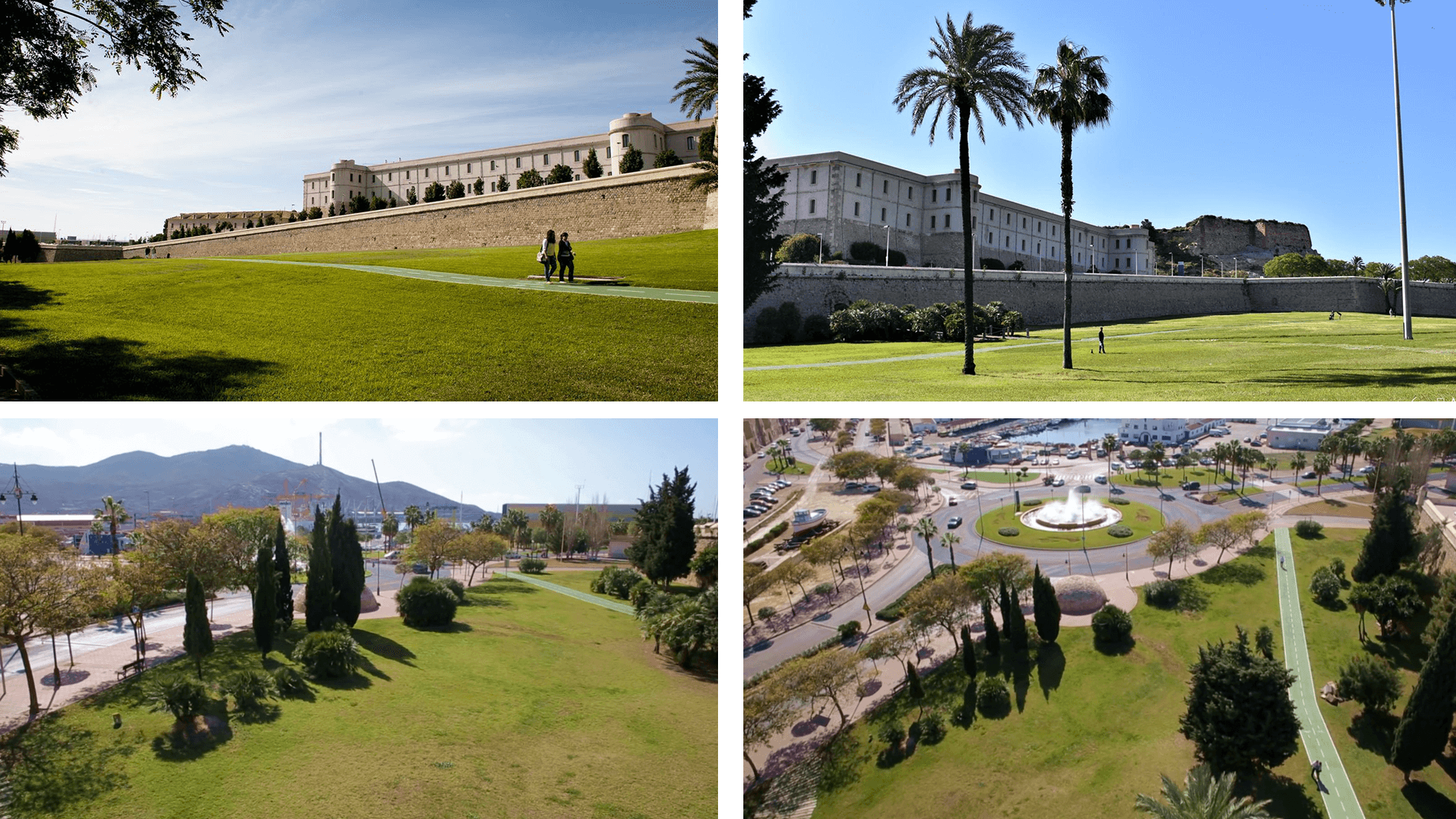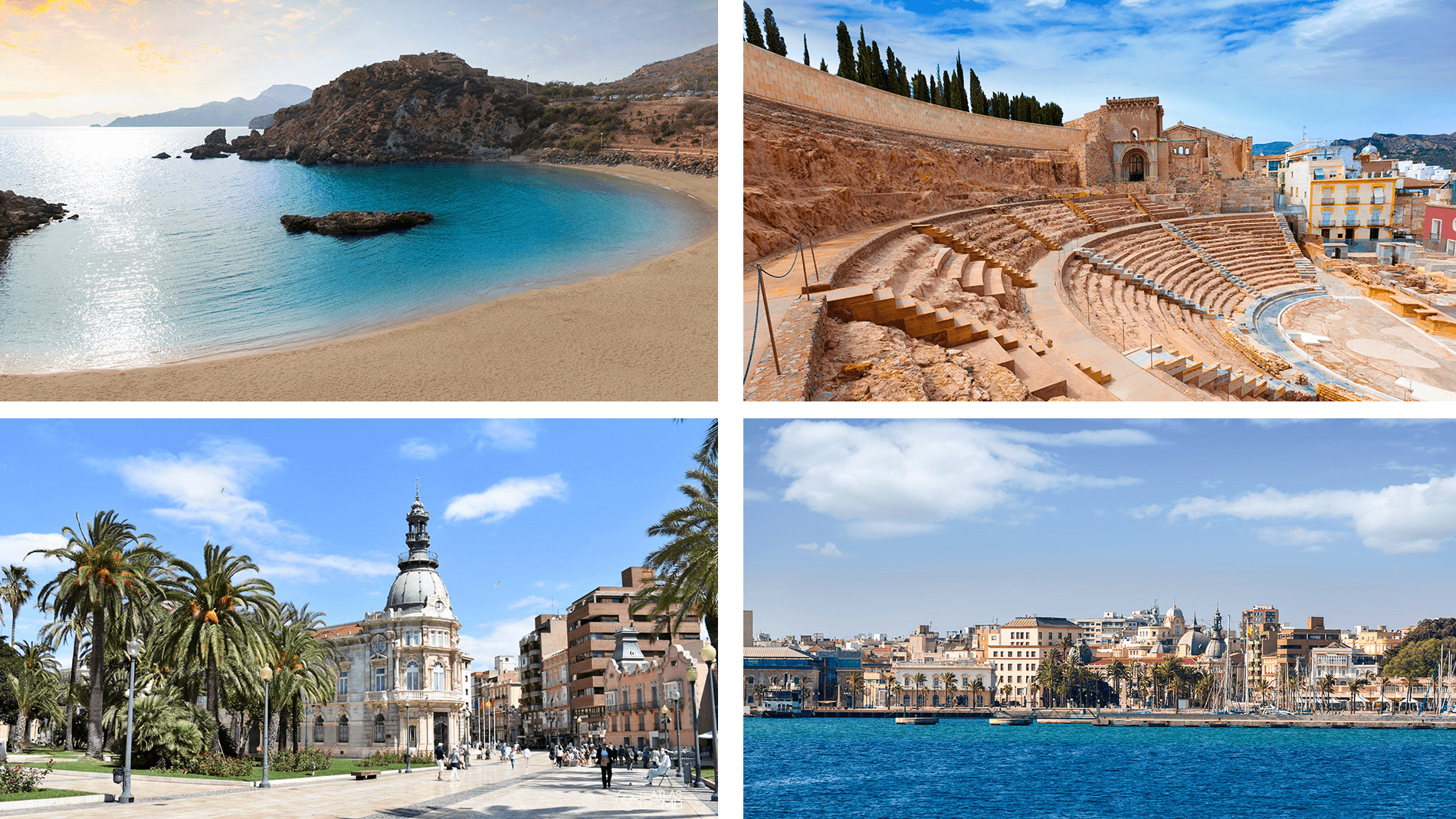La Manga del Mar Menor es una formación arenosa, del tipo isla barrera, con una longitud de 22kms y una anchura entre los 90 y 900m. Esta formación da lugar a través de los canales de comunicación con el Mediterráneo, las denominadas golas, a la laguna litoral del Mar Menor, humedal de importancia internacional, de 170km2 de superficie y una profundidad máxima de 8 metros. Sus aguas, debido a su temperatura media anual de 18º y su tranquilidad las convierten en un lugar excepcional para la práctica de todo tipo de deportes náuticos.
Las islas del Mar Menor: del Sujeto, del Barón, del Ciervo, Redondela y Perdiguera, constituyen un paisaje protegido.
La Manga arranca desde el Cabo de Palos, un accidente geográfico que se ha convertido hoy en un pueblo pescador y turístico, en el que destaca el Faro que fue construido en 1864.
La belleza y conservación de los fondos marinos de Cartagena, la han convertido en uno de los destinos preferidos para la práctica del submarinismo en España. Destacan lugares como las reservas marinas de Cabo de Palos e Islas Hormigas, o la reserva marina de interés pesquero de Cabo Tiñoso (al oeste de la ciudad), destacando las grandes praderas de posidonia así como las colonias de corales que conforman el hábitat de numerosas especies vegetales y animales. Asimismo, se pueden encontrar vestigios de otras épocas, desde pecios romanos a barcos hundidos durante la Guerra Civil.
La próxima zona de Cabo Tiñoso es la que ofrece un aspecto más salvaje y solitario de toda la costa de Cartagena, destacando sus preciosas calas como la Cala Cerrada, Cala Salitrona, Cala Boletes y Cala Aguilar, entre otras. La playa de La Azohía conserva, junto a una bien dotada infraestructura turística, el caserío marinero tradicional. Entre La Azohía y la vecina localidad de Mazarrón se halla Isla Plana, otro pueblo dedicado al turismo estival.
En los alrededores del entramado urbano, encontramos el campo de Cartagena, tal y como se conoce a la comarca que se extiende desde las sierras de Mazarrón y Carrascoy hasta el litoral del Mar Menor y el Mar Mediterráneo.
La necesidad de moler los productos del Campo de Cartagena y de extraer el agua de su subsuelo, unido a la existencia de vientos constantes y fuertes propiciaron la aparición de norias de sangre y molinos de viento, una de las típicas estampas de nuestros campos. Molinos harineros, molinos de elevar agua, esparteros y salineros. Todos ellos se caracterizan, como es normal en una zona marinera, por sus velas triangulares, en lugar de las clásicas aspas. En la actualidad se conservan más de un centenar de estos elementos característicos del campo cartagenero.
El entorno de la cercana sierra minera de Cartagena, ha sido definido en ocasiones como de “paisaje lunar”. Se trata de grandes explotaciones a cielo abierto, que ofrecen una singular variedad de colores, todo ello completado por los restos de diversas construcciones de las explotaciones mineras, entre los que destacan los singulares “castilletes”.
Fuente: https://turismo.cartagena.es



